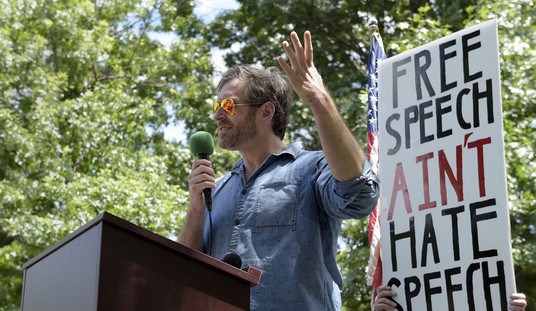“A Sydney carbon credits company thought to have been running some of the world’s biggest offsets deals appears to be a fake, shifting paper certificates instead of saving forests and cutting greenhouse emissions.” The company, Shift2Neutral, was set to close deals “to generate more than $1 billion worth of carbon credits by saving jungles from logging in the Philippines, the Congo and across south-east Asia”.
The company was offsetting events, like a racing team’s emissions, by invoking sustainably managed tribal forests in Mindanao.
“The carbon credits come from REDD, acronym for the efforts to “reduce carbon emissions from deforestation and forest degradation”, or Avoided Deforestation credits in relation to more than 1.7 million ha of native rainforest on the Philippine island of Mindanao, which is being protected from illegal logging and mining by the traditional owners and Tribal Coalition Of Mindanao Inc.
“Tribes in the area receive funds from the sale of carbon credits to protect their villages and way of life and ensure a sustainable future for their children through the provision of medical services, food, clothing and shelter. The cost of offsetting the team’s racing activities for the season is US$1,460 ($2,020). The team’s sponsors also buy carbon credits and receive certification through Shift2Neutral on the carbon status of their business.”
Buyers became suspicious when they traced the company’s headquarters to a shopping mall in suburban Australia. The Sydney Morning Herald reports:
The global network of investors and carbon offset certifiers supposed to be brokering deals with foreign presidents and the World Bank can be traced to a modest office in a shopping village in Westleigh, staffed by shift2neutral’s founder, Brett Goldsworthy. …
But when pressed for examples of any specific project that has cut emissions to generate the carbon credits the company offers for sale, he was unable to provide even one.
”I just don’t have that information in front of me right now – there are all sorts of projects, it is all legit, I just am not in a position to tell you what they are at short notice,” said Mr Goldsworthy, who had been provided with written questions 24 hours before.
”There was a waste-to-energy plant in Korea, it would have been in about 2008. I don’t have a name for you right now, but given time I can get all the information.”
But suppose the company’s offices had been in Geneva, Brussels or New York? If Mr. Goldsworthy could have produced studies certified by the United Nations, would everything have been OK? There are no official or agreed standards in the voluntary carbon trading market. If you pay for something that makes you feel better, you get your money’s worth. Recently newspapers reported that a scam worth as much as $2.7 billion has been operating out of China.
At a meeting this week that ended Friday, the executive board of the UN’s Clean Development Mechanism said that five chemical plants in China would no longer qualify for funding as so-called carbon offset credits until the environmentalists’ claims can be further investigated.
The “CDM” credits have been widely used in the carbon trading markets of the European Union, Japan and other nations that signed onto the 1997 Kyoto Protocol requiring mandatory cuts in greenhouse gases.
Rather than cut their own carbon emissions, industrialized nations can buy the credits which then pay developing countries to cut their greenhouse gases instead.
But environmentalists say rich nations could be wasting billions of dollars on what some are calling “perverse financial incentives,” because some of the largest projects funded by the UN-managed CDM are a golden goose for chemical makers without making meaningful cuts in emissions.
The CDM executive board, based in Bonn, Germany, has asked for a decades’ worth of data on the gases from those five plants in China to study whether the system was manipulated.
That would make the operation working out of a shopping mall a mom and pop operation. The Guardian reports that “European authorities believe the EU has lost at least €5bn to carbon-trading VAT fraud in the last 18 months. Europol, the EU’s law-enforcement operation, fears the fraud will be used in other areas, especially gas and electricity trading markets, after criminals found VAT fraud was one of the most lucrative financial frauds.”
The fraud occurs when carbon credits are bought and imported tax-free from other EU countries, then sold to domestic buyers, charging them VAT. The UK allows credits to be sold without adding VAT, while Belgians must pay VAT when they buy credits. Once the transaction, or series of transactions, are complete, the sellers disappear without paying the tax.
Like the bundled subprime mortgages, what investor can readily examine the underlying value of the traded security? What is a carbon credit really worth? How do you measure its benefit. The answer it seems, is not easily. But that’s ok, we’ve got the save the planet, even if it means losing our pants.
The real problem, it seems to me, is that unlike a hamburger or a digital camera, a medical procedure or a DVD, you have no way of knowing whether you’ve received the goods paid for. There is no ready way to measure the product. It cannot be stored in a closet or even a steel retaining tank. And yet billions will have changed hands, hundreds of millions of lighbulbs will have been discarded, cars will have been junked and whole industries outlawed for this ghostly commodity. If the purchasers of the product sold from the shopping mall did not know they did not receive their purchase, who else would know?
[youtube GjbtU2UJhyw]
“No Way In” print edition at Amazon
Tip Jar or Subscribe for $5










Join the conversation as a VIP Member